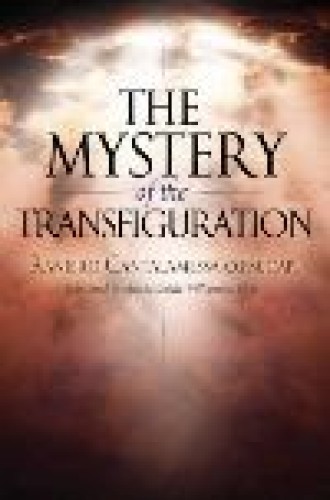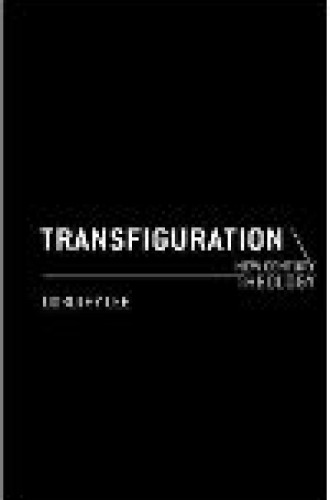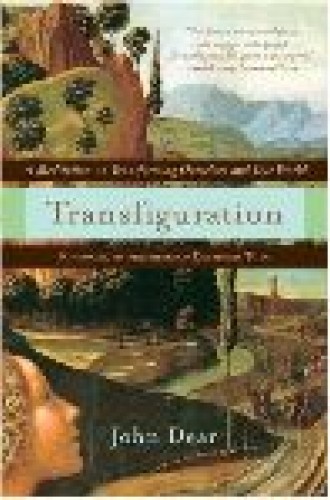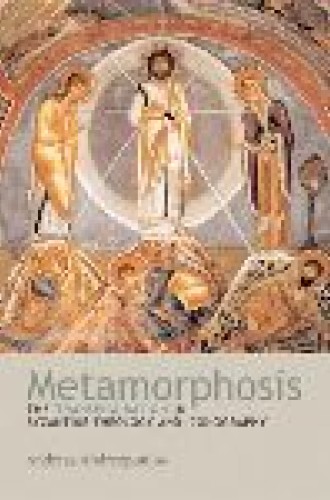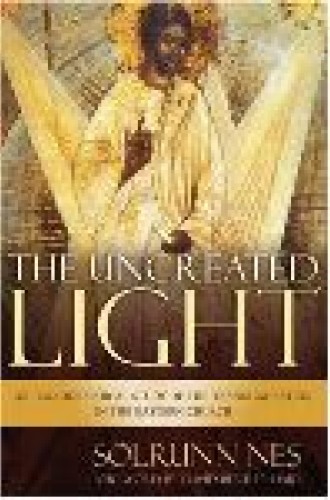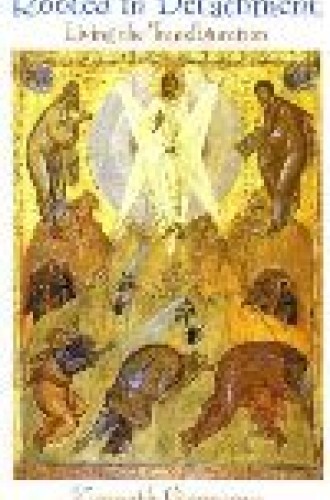Transformed
The Transfiguration provides a window through which the Christian narrative may be viewed.
The 2008 presidential race, particularly on the Democratic side, has been framed as an argument about change. Senator Barack Obama, whose campaign would not have been possible without the social transformations of the last half-century, contends that he is the candidate most capable of bringing about a “working majority for change.” His Republican opponent, Senator John McCain, counters that Obama envisions the wrong kind of change for the country. The language of change is not limited, of course, to political rhetoric. Everything in American culture, from technology to fashion to popular art, reflects our hunger for something new or different.
The Christian faith entails a belief in change, but it is change grounded in the redemptive life, death and resurrection of Jesus Christ. Whatever changes we may hope for in persons, church or society acquire a transcendent meaning only when they participate in the dynamic reality that has broken into the world in Christ. It is instructive that the most dramatic instance of change in the New Testament is a change in the physical figure of Jesus himself.
The three synoptic Gospels each tell, with some variations, the story of how Jesus withdrew to a remote mountain in the middle of his journey from Galilee to Jerusalem. While he prayed and the disciples Peter, James and John looked on, Jesus was transfigured and his body and clothing shone with a radiant light. Two figures, identified as Moses and Elijah, appeared with him. Peter cryptically suggested that he build tents or dwellings for the three glorified figures. A cloud, however, overshadowed them, and a divine voice identified Jesus as the Son of God. The voice, the cloud, the light and the heavenly attendants then vanished to leave Jesus alone with the disciples.
The appearance of the risen Jesus to his disciples is the origin of the early Christian movement. But there are no witnesses to the moment of resurrection. The empty tomb is the first sign of Christ’s victory over sin and death. The Gospel accounts of the transfiguration, therefore, provide the best visual clue to the nature of Christ’s resurrection from death to life and the resurrection of all human beings at the end of time. The transfiguration shows what happens when the divine reality is fully manifest in human existence.
The Greek word for transfiguration in the New Testament, metamorphosis, designates a change in shape or figure. It refers to the change in Christ’s physical appearance to his disciples and the change that is effected through participation in his glorified life. Hence, Paul can write that “we all with unveiled face beholding as in a mirror the glory of the Lord are being transfigured into the same image from glory to glory” (2 Cor. 3: 18). Transfiguration is both an event in the life of Christ and a process in the life of the world.
Significantly, the transfiguration takes place on a mountain. In Christian legend, the mountain is Tabor. The mountain, a sacred space in ancient Jewish cosmology, is where heaven and earth, God and humanity, meet. The heavenly light that radiates from the body of Jesus attests both to his divinity and to the transformative power of his divine presence. Even the inanimate, material creation is affected. The clothes of Jesus glow so brightly that “no one on earth could bleach them” (Mark 9:3). In Matthew’s Gospel, the face of Jesus shines “like the sun,” while his clothing becomes “white as the light” (Matt. 17:2). In Luke, the appearance of Christ’s face is altered and the disciples see the divine glory in it. The glory of Christ on the mountain is thus the “true light” that, in John’s Gospel, “enlightens everyone” and is “coming into the world” (John 1:9).
Moses and Elijah are recipients of revelations on Mount Sinai during climactic periods in the history of Israel. Moses, the leader of the exodus from Egypt and the giver of the Law, and Elijah, the first of the major Jewish prophets, together represent Israel’s past. Jesus, however, is understood in the New Testament as Israel’s future, the promised Messiah. In Luke, the transfiguration foreshadows the new exodus that Jesus accomplishes when he arrives in Jerusalem.
The cloud and the voice are familiar motifs in the Hebrew Bible. The cloud recalls the one that followed the Jews in the wilderness, alternatively dark during the day and luminous at night. Moses enters the cloud before encountering God on Mount Sinai. The cloud also symbolizes the Jewish notion of the Shekinah, the indwelling presence or immanence of the Divine in creation and with God’s chosen people. Its appearance with the voice proclaiming Jesus as the divine Son associates it with the Holy Spirit, who appears in the form of a dove with the same voice at Jesus’ baptism. The voice from above is, of course, that of God, classically interpreted as the first person of the Trinity. The radical change in the appearance of Jesus, in conjunction with the cloud and the divine voice, reveals that he is no ordinary prophet but rather the fulfillment of prophecy, the promised Messiah, the presence of God in the flesh. The transfiguration, like other key events in the Gospels, testifies to the trinitarian nature of God as well as the divinity of Christ.
The transfiguration provides a window through which the Christian narrative may be viewed. J. W. C. Wand, an Anglican theologian, wrote several decades ago that “it is actually possible to regard transfiguration as the fundamental idea in the Christian religion and as placing in a nutshell the whole story of the individual Christian life as well indeed as that of society as a whole.” The transfiguration looks backward to God’s presence in creation and the history of Israel and forward to the redemption of the world and its final, glorious consummation in Christ. In the theology of the patristic period and the later Christian East, the transfiguration is interpreted as a disclosure of the divinity of Christ, a unique visual display of the glory of God that shows the salvific nature of Christ’s life, death and resurrection and the eschatological consummation of all things. The transfigured body of Jesus anticipates the divinization of humanity (in the language of the East) and the final transformation of the cosmos.
The transfiguration of Christ has not received a great deal of attention in modern theology. Some scholars regard it as a mythological accretion or as a postresurrection event adapted and incorporated into the life of Jesus by the writers of the synoptic Gospels. But several books on the transfiguration have recently appeared in English.
Raniero Cantalamessa depicts the transfiguration as a “mystery in the life of Christ” that should lead us into an intellectual and mystical contemplation of his person and work. The transfiguration is a visible manifestation of Christ’s divinity in his humanity. For Cantalamessa, the glorification of Christ on the mountain is an ideal vista from which to observe two classical theological approaches to Christ, one “from below” that moves from his humanity to his divinity and one “from above” that moves from his divinity to his humanity. The former approach, represented by Paul and the Antiochian school of Christology, emphasizes Christ’s self-emptying, obedient death on the cross as the locus of salvation. The latter approach, taking its cue from John and the school of Alexandria, regards salvation as the consequence of the deifying effects of the incarnation of the Word in human nature. The transfiguration narrative, balanced between heaven and earth, incarnation and resurrection, unites the two approaches by showing the glory of Christ’s obedient victory over death in the form of his incarnate humanity.
Dorothy Lee offers a commentary on the biblical texts that highlights the sacramental and eschatological dimensions of the transfiguration. Lee follows the ancient church and describes the transfiguration as both an epiphany and an apocalyptic vision that “discloses the face of God and the hope of God’s future.” The materiality of the transfiguration points both to the incarnation of God in Christ and the presence of God in the sacraments. The Eastern church, as Lee notes, invokes the transfiguration in its celebration of the Lord’s Supper. This materiality belies any attempt to interpret salvation in exclusively spiritual or ecclesial terms, for it is the whole world that is the field of God’s action in Christ.
Lee acknowledges that the transfiguration takes place in a world that remains disfigured by sin. But the transfiguration is evidence that we have reason to be optimistic about the future of our world. “The hope of salvation,” Lee writes, “is the promise of a world remade, all the diversity and complexity of creation enfolded in the one pure, uncontaminated beam of light. The transfiguration is about the renewing and restoring of the earth.” The Christian faith in the transfiguration of the world in Christ may thus be marshaled in support of a global and ecological consciousness.
The material, visible nature of the transfiguration makes it a natural subject for painting, and it has played a central role in the development of Eastern iconography. Andreas Andreopoulos and Solrunn Nes both explore the relationship between theological and iconographic representations of the transfiguration in the Eastern church. In 787, the seventh ecumenical council in Nicea resolved the controversy over icons by declaring that both word and image may lead to knowledge of God. The icon is a visual supplement to the written Word of the scriptures and a source of theology in its own right. The image often represents what cannot be put into words but may yet be displayed through visual means. Icons of the transfiguration, for example, depict Christ inside a round or oval mandorla, a sacred space around his body that symbolizes his glory and the divine dimension of his being. Major icons of the transfiguration, moreover, such as the sixth-century mosaics in the apse of the monastery of St. Catherine at Mount Sinai and St. Apollinaris Church in Ravenna, or the 14th-century icons of Andrei Rublev and Theophane the Greek, did not just reflect but substantially contributed to the development of Byzantine theology.
As both Andreopoulos and Nes observe, Eastern writers viewed the transfiguration narrative as a model of our own spiritual ascent toward God, a process by which our spiritual senses gradually awaken to a perception of the divine beauty. Desert fathers such as Pseudo-Macarius associated the light shining from Christ’s body and clothing with the interior illumination of the mystic. The mysticism of 14th-century Eastern Christianity, hesychasm, interpreted this light as a manifestation of the uncreated light of God. The uncreated light fills all matter and is the source of its radiance. The purpose of ascetic and contemplative practices in the East is for the purification of our senses so that we may perceive the light of God in ourselves and all things. Icons of the transfiguration aim to both portray the theology of the uncreated light and facilitate our participation in it.
In Christian spiritual practice, iconography may serve as a starting point for the contemplation of the transfigured Christ. Kenneth Stevenson begins his book with a meditation on an icon painted by Theophanes the Greek and explores the transfiguration for what it tells us both about Christ and about ourselves. Stevenson wrote his volume during a period of recovery from leukemia, and its pages alternate between a theological interpretation of the transfiguration and personal reflections on his own transfiguring experience of surviving a serious illness. Stevenson draws upon a wide range of writers, including the church fathers Origen and Augustine; medieval theologians, notably Peter the Venerable; the giants of Eastern theology Maximus the Confessor and Gregory Palamas; and Protestant figures like John Hacket, Mark Frank and Nicolai Grundtvig. Their multiple perspectives, taken together, show the transfiguration to shed light on most of the central Christian doctrines about God, Christ, the church and humanity.
Stevenson does not stop with theology, however. His readings of various theologians deftly move through each successive stage of the transfiguration narrative and show how it illumines his own process of recovery. The disciples’ ascent of the mountain, for example, recalls the difficulty of any personal journey, while the change in the appearance of Jesus is a stark reminder of the physical alterations caused by chemotherapy treatments. The voice of God from the cloud resounds through our own, more mundane experiences of hearing God speak to us. For Stevenson, the transfiguration is not only about the momentary vision on the mountain, but also about the return to the world of everyday life where God works in more familiar ways.
John Dear also examines the transfiguration for what it tells us about the Christian spiritual life. For Dear, a peace activist, any genuine spiritual ascent must be accompanied by a commitment to contemplative nonviolence, social justice and radical Christian discipleship. “Peacemaking,” he writes, “is not an optional commitment. It is a requirement of our faith.” The transfiguration reveals not only the divine light but also the divine peace. Ironically, the feast day of the transfiguration and the anniversary of the U.S. bombing of Hiroshima occur on the same day, August 6. As Dear notes, Dorothy Day called the U.S. bombing an “antitransfiguration,” the opposite of the hope for the world embodied in the glorification of Christ on Tabor. The mountaintop experience, in the lives of great social activists such as Gandhi and Martin Luther King Jr., motivates them to descend from the mountain and work for the transformation of the world.
Dear refuses to separate moral and spiritual formation in the Christian community from the Christian responsibility to witness to God’s redemptive presence in human history. He thus reminds us, as we face a potentially defining moment in the history of America, of the theological warrants for Christian involvement in movements of social and political change. The Christian hope, after all, is that Christ will come again, not to destroy but to renew and transfigure God’s creation. “See, the home of God is among mortals. He will dwell with them as their God; they will be his peoples, and God himself will be with them” (Rev. 21:3). The Christian faith in the God whose light shines from the holy mountain empowers us to confront all the forces of darkness in our midst. We do not need to choose between religious and secular fanaticism, the god of death and the death of God. We worship a God of life. And the God of life has already died and risen from the dead for the transfiguration of the whole world.


